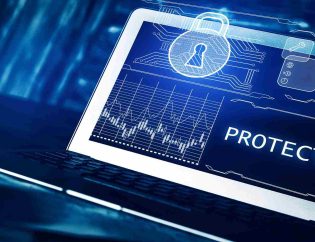
Table of Contents
Introduction
Endpoint visibility is an essential component of modern cybersecurity. In a rapidly evolving digital landscape, without effective monitoring of all connected devices, companies leave themselves vulnerable to potential cyber threats. Blind spots in endpoint visibility can significantly compromise network security, creating opportunities for attackers to breach systems undetected. This article will explore how endpoint visibility works, why it’s crucial to have a complete view of your endpoints and how blind spots can expose your network to cyber risks. Additionally, we will discuss how robust endpoint visibility solutions enhance access control and security measures.
What is Endpoint Visibility?
Endpoint visibility refers to the ability to monitor and manage all devices connected to your network, including desktops, laptops, smartphones and IoT devices. It is a critical cybersecurity practice that allows IT teams to track which devices are accessing network resources and data. When organizations lack endpoint visibility, unauthorized devices can gain access without being detected, creating significant security risks. By ensuring full visibility of all endpoints, organizations can actively manage device access, detect anomalies and enforce security policies to reduce vulnerabilities.
Why Endpoint Visibility Matters for Cybersecurity
Endpoint visibility is one of the most effective ways to protect your organization’s data and network from cyber threats. With real-time visibility into all connected endpoints, IT teams can immediately identify suspicious activity, unauthorized devices or devices that are out of compliance with security protocols. This proactive monitoring is vital for preventing data breaches, reducing downtime and minimizing the impact of cyberattacks. In a world where cyber threats are constantly evolving, having complete endpoint visibility is essential for maintaining a robust defense against both internal and external risks. As an Endpoint Security Company, we understand the importance of securing every endpoint in your network and ensuring comprehensive monitoring to mitigate risks.
The Dangers of Blind Spots in Endpoint Visibility
Blind spots in endpoint visibility create significant risks for organizations. These gaps occur when devices are not properly monitored or when endpoint monitoring systems fail to capture all data from endpoints. The main dangers of these blind spots include:
Unauthorized Access:
Devices outside of the security perimeter may access critical systems without detection.
Data Breaches:
If a compromised endpoint isn’t flagged, attackers can exfiltrate sensitive information.
Delayed Detection of Threats:
Cyberattacks, such as ransomware or malware, can spread undetected across blind spots, causing extensive damage.
Without full endpoint visibility, networks remain vulnerable to these types of attacks. Ensuring that all devices are continuously monitored helps organizations detect threats early and mitigate potential damage.
Key Benefits of Endpoint Visibility
There are several benefits to having comprehensive endpoint visibility in place:
Increased Threat Detection:
Proactively identify and mitigate security risks before they impact the network.
Improved Security Posture:
Having full visibility ensures no device can go unnoticed, making it harder for attackers to find weaknesses.
Regulatory Compliance:
Many industries require strict data protection protocols. Endpoint visibility ensures compliance with standards like GDPR, HIPAA and PCI DSS.
Faster Incident Response:
With clear insights into endpoint activity, security teams can respond quickly to potential threats, minimizing the impact.
By implementing robust endpoint visibility, organizations are not only improving security but also enhancing their operational efficiency by streamlining device management.
How Endpoint Visibility Enhances Access Control and Security
Endpoint visibility directly influences how effectively access control policies are implemented. Without monitoring, unauthorized devices might access sensitive data and systems. However, with endpoint visibility, IT administrators can enforce security policies that control who or what can access specific network resources. This integration of endpoint monitoring with access control systems helps organizations prevent unauthorized access, secure data in transit and block potential entry points for cyberattacks.
For instance, by continuously checking the health of devices, endpoint visibility can automatically restrict or revoke access to compromised devices, ensuring that they do not become a vector for malware or data breaches.
What is Endpoint Visibility Access and Security?
Endpoint visibility access and security is the practice of ensuring that only authorized devices can access critical network resources. This involves tracking all devices, monitoring their security posture and enforcing policies that deny access to non-compliant or suspicious endpoints. Endpoint visibility plays a crucial role in strengthening access control systems, ensuring that devices remain secure and conform to predefined security protocols. This way, organizations reduce the risk of cyberattacks that target weak or vulnerable endpoints.
Customer Testimonial
“Since integrating endpoint visibility solutions, our security team has detected threats much earlier, significantly reducing breach incidents. The continuous monitoring has made our network much more secure.”
– John Doe, IT Security Lead, ABC Corp.
Bullet Points
Why Endpoint Visibility is Essential for Network Security:
How to Achieve Robust Endpoint Visibility:
| Benefits of Endpoint Visibility | Impact |
|---|---|
| Enhanced Security | Prevents unauthorized access and detects malware early |
| Improved Compliance | Ensures compliance with industry regulations |
| Better Incident Response | Helps IT teams identify and respond to threats faster |
| Reduced Risk | Minimizes the likelihood of a data breach or attack |
Blind spots in endpoint visibility can open the door to serious security risks. It’s time to secure your network with complete endpoint monitoring. #EndpointVisibility #CyberSecurity
— Hyper Secure (@HyperSecure) December 13, 2024
Conclusion
Endpoint visibility is an essential aspect of modern cybersecurity, providing organizations with the tools to detect and respond to threats promptly. At Hyper Secure, we specialize in implementing advanced endpoint visibility solutions to ensure your network is secure, compliant and fully protected. Our services help you monitor and control access to prevent breaches, keeping your sensitive data safe from emerging cyber threats.
FAQs
1. What is endpoint visibility?
Endpoint visibility is the monitoring and management of all devices accessing a network to ensure they are secure and compliant.
2. Why is endpoint visibility important?
It helps identify unauthorized access and detect cyber threats early, enhancing overall network security.
3. How can endpoint visibility improve security?
By monitoring devices in real time, endpoint visibility allows for quick identification and mitigation of security risks.
4. What are the benefits of endpoint visibility?
Benefits include increased security, regulatory compliance, better threat detection and improved incident response times.
5. How does endpoint visibility enhance access control?
It ensures that only secure and authorized devices can access network resources, preventing unauthorized access.








